The 2SC5200 is a high-power, NPN-type bipolar junction transistor (BJT) commonly used in audio power amplifiers and other high-power applications. This transistor has high voltage capacity – Collector to emitter and Collector to base voltage of 230V. The 2SC5200 can handle currents up to 15A, making it suitable for high-power applications. It is part of the 2SC series of transistors and is commonly used in high-fidelity audio amplifiers, professional audio equipment, high-power switching circuits, high power Regulating circuit and in DC-to-AC inverters circuits.
Complementary to PNP 2SA1943
2SC5200 transistor Specifications
- Type: High Power NPN Transistor
- Maximum Collector-Emitter Voltage (Vce): 230V
- Maximum Collector-Base Voltage (Vcb): 230V
- Maximum Emitter-Base Voltage (Veb): 5V
- Collector Current (Ic): 15A (maximum)
- Power Dissipation (Ptot): 150W (when properly heat-sinked)
- Transition Frequency (fT): 30 MHz
- Gain (hFE): 55 to 160 (depending on the specific version)
- Available in To-264 Package
Features of 2SC5200 Transistor
- High Current Capacity:
- With a maximum collector current of 15A, the 2SC5200 is suitable for high-power applications, such as driving large speakers or motors. It can easily handle substantial current without overheating when properly cooled.
- High Power Dissipation:
- The ability to dissipate up to 150W (when heat-sinked) makes this transistor ideal for use in power amplifiers. Efficient power dissipation is critical in preventing thermal runaway and ensuring reliable operation over time.
- High Voltage Tolerance:
- The transistor’s high collector-emitter and collector-base voltage ratings (230V) allow it to be used in circuits that require high-voltage handling, such as power supply units, inverters, or motor drivers.
- Good Gain Characteristics:
- Its current gain (hFE) allows it to amplify small input signals to higher currents, making it a good choice for power amplification in audio systems. Although its gain range is moderate, it is optimized for delivering power rather than maximizing small-signal amplification.
- Complementary Pair (2SA1943):
- The 2SC5200 is often paired with its complementary PNP transistor, the 2SA1943, in push-pull amplifier designs. This pairing ensures that both halves of the audio signal are amplified efficiently.
- Durability and Thermal Stability:
- The 2SC5200 is designed to operate at high temperatures (up to 150°C junction temperature), making it durable and capable of operating in demanding environments.
- Low Distortion:
- In audio applications, the 2SC5200 is known for providing low harmonic distortion, which is essential for high-fidelity audio amplification.
Applications of 2SC5200 transistor
- Audio Power Amplifiers: It is commonly used in high-quality audio power amplifiers due to its ability to handle large power loads with low distortion.
- Power Switching: Suitable for use in high-power switching circuits and DC-to-AC inverters.
- Motor Drivers: Its high current and voltage ratings make it a good fit for driving motors in industrial and hobby projects.
- Power Supplies and Regulators: Can be used in circuits that regulate or switch high voltage and current.
2SC5200 transistor Equivalents
2SC3320(15A), 2SC5242(15A), 2SD1313(25A)
2SC5200 vs.TTC5200
The TTC5200 from TOSHIBA is an improved version of the 2SC5200 power transistor. It comes in TO-3P packaging, is less expensive than the 2SC5200, and has better specifications and endurance. It’s unquestionably the better option of the two! Laboratory experiments demonstrate that the newer TT transistors can survive severe temperatures and are extremely durable.
2sc5200 transistor watt 150W
2sc5200 transistor voltage 230V
FAQ for Transistor 2SC5200
1. What is the 2SC5200 transistor?
The 2SC5200 is a high-power NPN bipolar junction transistor (BJT) mainly used in audio amplifier circuits and power switching applications.
2. Where is the 2SC5200 transistor used?
This transistor is commonly used in:
- High-power audio amplifiers
- Power supply circuits
- Motor drivers
- Switching applications requiring high voltage and current handling
3. What makes the 2SC5200 special?
- High Power Handling: Can handle up to 150W, making it ideal for powerful audio amplifiers.
- High Voltage & Current Ratings: Suitable for circuits that require handling large currents and voltages.
- Good Linearity: Provides stable performance in audio applications with low distortion.
- Durability & Reliability: Designed to operate efficiently even under heavy loads.
4. Can I use the 2SC5200 in a DIY audio amplifier?
Yes, the 2SC5200 is one of the most popular transistors for building high-quality audio amplifiers due to its efficiency and power capabilities.
5. Does the 2SC5200 require a heat sink?
Yes, due to its high power dissipation, using a proper heat sink is necessary to prevent overheating and ensure stable performance.
6. What is the complementary pair for the 2SC5200?
The complementary PNP transistor for the 2SC5200 is 2SA1943. They are commonly used together in push-pull amplifier designs.
7. How does the 2SC5200 compare to other transistors?
Compared to other transistors, the 2SC5200 is known for its excellent efficiency in high-power applications, particularly in audio amplification, where it provides superior sound quality with minimal distortion.
FAQ: Maximum Current Load Capacity of 2SC5200 Transistor
1. What is the maximum current handling capacity of the 2SC5200 transistor?
The maximum collector current (Ic) of the 2SC5200 transistor is 15A. This means it can safely handle up to 15 amps of continuous current under optimal conditions.
2. Can the 2SC5200 handle more than 15A?
No, exceeding 15A can cause excessive heating and potential damage to the transistor. In some cases, with proper cooling and pulsed operation, it may momentarily handle slightly higher currents, but continuous operation beyond 15A is not recommended.
3. What happens if the transistor exceeds its maximum current limit?
If the current exceeds 15A, the transistor may overheat, leading to:
- Performance degradation
- Thermal runaway
- Permanent damage or failure
4. How can I safely operate the 2SC5200 at high currents?
To ensure safe operation at high currents:
- Use a proper heat sink to dissipate heat effectively.
- Ensure good ventilation around the transistor.
- Use parallel transistors if higher current capacity is needed.
- Do not exceed the maximum power dissipation limit of 150W.
5. Does the current capacity change with temperature?
Yes, as temperature increases, the transistor’s ability to handle high currents reduces. Proper thermal management is crucial for maintaining its rated performance.
6. Can I use 2SC5200 in a high-current application like a motor driver?
Yes, but for very high current applications, multiple transistors in parallel or a more suitable power transistor should be used to distribute the load evenly.
Transistors Similar to 2SC5200
Best alternatives to 2SC5200 transistor
If you’re looking for alternatives to the 2SC5200 with similar specifications, here are some options:
1. 2SC3858
- Voltage Rating: 200V
- Current Rating: 17A
- Power Dissipation: 200W
- Application: High-power audio amplifiers
2. 2SC2922
- Voltage Rating: 180V
- Current Rating: 17A
- Power Dissipation: 200W
- Application: High-fidelity audio amplification
3. MJL21194
- Voltage Rating: 250V
- Current Rating: 16A
- Power Dissipation: 200W
- Application: Power amplifiers, industrial applications
4. TIP35C
- Voltage Rating: 100V
- Current Rating: 25A
- Power Dissipation: 125W
- Application: General power switching, motor control
5. TTC5200
- Voltage Rating: 230V
- Current Rating: 15A
- Power Dissipation: 150W
- Application: Equivalent to 2SC5200, used in the same applications
These transistors are commonly used in high-power applications, especially in audio amplifiers, motor drivers, and power supply circuits.
2SC5200 Datasheet
TTC5200 Datasheet


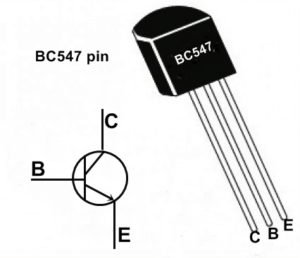
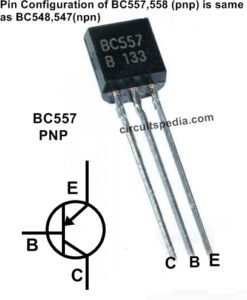
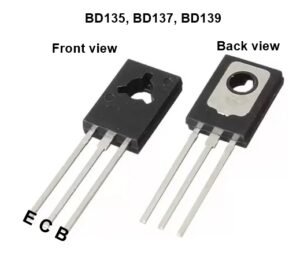

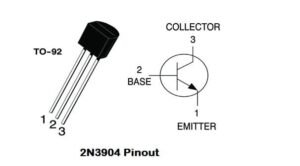


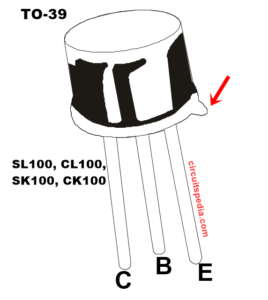
Great info and right to the point. I don’t know if this is really the best place to ask but do you folks have any thoughts on where to employ some professional writers? Thanks in advance 🙂